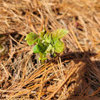Squash Vine Borers are here in Charleston, SC
sckitchen_gardener_8
13 years ago
Featured Answer
Sort by:Oldest
Comments (9)
Donna
13 years agolast modified: 9 years agosckitchen_gardener_8
13 years agolast modified: 9 years agoRelated Discussions
Squash Vine Borers yet?
Comments (24)I have planted Fordhook zucchini and think that it is a little more vigorous and resistant. I have used row cover and I think it can work. I start the seeds in pots and transplant them under cover in mid-May . You have to remove it at some point so that the blossoms can be pollinated (unless you plan to pollinate them yourself.) I then plant a second crop also initially under row cover that will mature after the borers have left. The row cover will not work if there are already eggs in the soil though and since I have planted squash all over my garden I don't know where they are hiding. I had great luck this year, but maybe that is because the borers were scarce. I have tried other deterrents and cures, but they have not worked. Even injected BT into the squash which did have some limited success but seemed a bit extreme. Friends grow Italian squash on vines that is resistant and they think it tastes pretty good although I prefer the taste and texture of zucchini. I have not tried nasturtiums, garlic or radishes, but I will put those on the list. It doesn't seem like a summer garden without zucchini. My second crops are usually not too productive. Does anyone have any advice on that?...See MoreSquash Vine Borers Last Year
Comments (5)The adult clearwing moths that lay the eggs that become the Squash Vine Borers emerge from cacoons in late June to early July. I would plant my squash as soon as I could after danger of frost is past (Memorial day around here) and use Floating Row Covers to protect the plants. kimmq is kimmsr...See MoreSquash Vine Borer questions
Comments (1)Hi Actionclaw, In my years of battling SVB, here are some of my observations: * Since I have read they lay eggs and start at the base, I usually heavily mulch my base so they cant get to it. Before I mulch the base, I inspects carefully for eggs and remove them. They are tricky and lay eggs under the leaf stems too, so checking with a small mirror helps here. But in my experience if they really lay eggs anywhere. I have seen eggs on top of leaves, on the tips of vines, on flower stalks, and under vines too. You have to check the vine very carefully. On pumpkins I will check vines and them bury the vines are they grow, with dirt. * I have found no pattern to which direction they bore, But I think most seem to be going towards the base. * On bush type summer squash I will inject as preventative, and I have found that pretty effective. I'm in Texas and we pretty much have SVB active from May to Sept, and I have certainly been able to extend the life of the bush type squashes by injecting. Vining types such as spaghetti squash, pumpkins, etc, for these I bury the vines as they grow. BT injections are just not practical because the vines are so long, and there are so many growing vine tips that fork out of the plant. But since the plants grow fast and root along the vines readily, even if the base gets taken out the plant will still live and produce. Here's my banana squash harvest! Another key here was getting an early start, so that the plants were big and strong once the SVB started....See MoreSquash Vine Borers, Trap advice
Comments (19)Thank y'all for all the information! I may throw some paint on these gourds and just roll some tangle trap on/in it just to see how it works. Definitely meant eggs not seeds! lol So if I just knock them off the plant, that's enough to ensure they don't get to the vine? Assuming they can't migrate, maybe interplanting is helping somewhat! I counted today and have 60 squash. Definitely too many to keep up with egg squishing for a long time and at this point, row covers wouldn't work for my current set up but will be something I look into in the future. Could I provide some type of home for some mason bees or something under the row covers and opt out of hand pollinating? That'd be great if it could be that easy! :) Has anyone tried Bt for SVB? I know it's not listed as effective against them but have read some anecdotal evidence that spraying & injecting work. Any one try this method? I was thinking if I do a combination of seed squishing (while it's manageable), gourd traps, & Bt I might stand a good chance @ beating them this year! I may try replanting in July just to see if it will work too! Everything usually starts to die from heat around then but I may have some other plants large enough to shade the squash sprouts/seedlings while they get started. Its starts to cool a bit towards the end of Sept so they should have time to pick up production once the heat wanes and before the Dec freeze....See Morestarlady
13 years agolast modified: 9 years agolsst
13 years agolast modified: 9 years agopotterhead2
13 years agolast modified: 9 years agogardengeek36091
13 years agolast modified: 9 years agostarlady
13 years agolast modified: 9 years agostargazer943
13 years agolast modified: 9 years ago
Related Stories

EDIBLE GARDENSSummer Crops: How to Grow Squash
Almost foolproof and with cheerful flowers, squash comes in a wide range of varieties to plant in spring
Full Story
GARDENING AND LANDSCAPINGTake Back Your Front Yard: 8 Ways to Make It Social
If only trees and squirrels gather in your front yard, you're missing out on valuable socializing space. Here's how to remedy that
Full Story
EDIBLE GARDENSSummer Crops: How to Grow Pumpkins
Start in spring to grow your own fall decorations and have plenty left for pies
Full Story
MOST POPULARHow to Add a Backyard Shed for Storage or Living
Need a home office, a playspace or extra room for your stuff? Learn about off-the-shelf, prefab and custom sheds
Full Story
CURB APPEAL7 Ways to Create a Neighborly Front Yard
Foster community spirit by setting up your front porch, paths and yard for social interaction
Full Story
SIDE YARD IDEASNarrow Trees for Tight Garden Spaces
Boost interest in a side yard or another space-challenged area with the fragrance and color of these columnar trees
Full Story
GARDENING GUIDES10 Easy Edibles for First-Time Gardeners
Focus on these beginner-friendly vegetables, herbs, beans and salad greens to start a home farm with little fuss
Full Story
FALL GARDENINGHouzz Call: Show Us Your Autumn Views
Share your pictures of fall foliage and decor in the Comments. Your photos may be featured in an upcoming story!
Full Story
EDIBLE GARDENSHouzz Call: What Did You Grow This Summer?
Let’s celebrate the homegrown fruits and vegetables of the season. Post your pictures and tell us about your harvest
Full Story
GARDENING GUIDESSmall Carpenter Bees Are Looking for a Home in Your Plant Stems
Provide flowers and nesting sites in your garden for this beautiful, tiny, metallic blue wild bee — your plants will thank you
Full Story



shebear